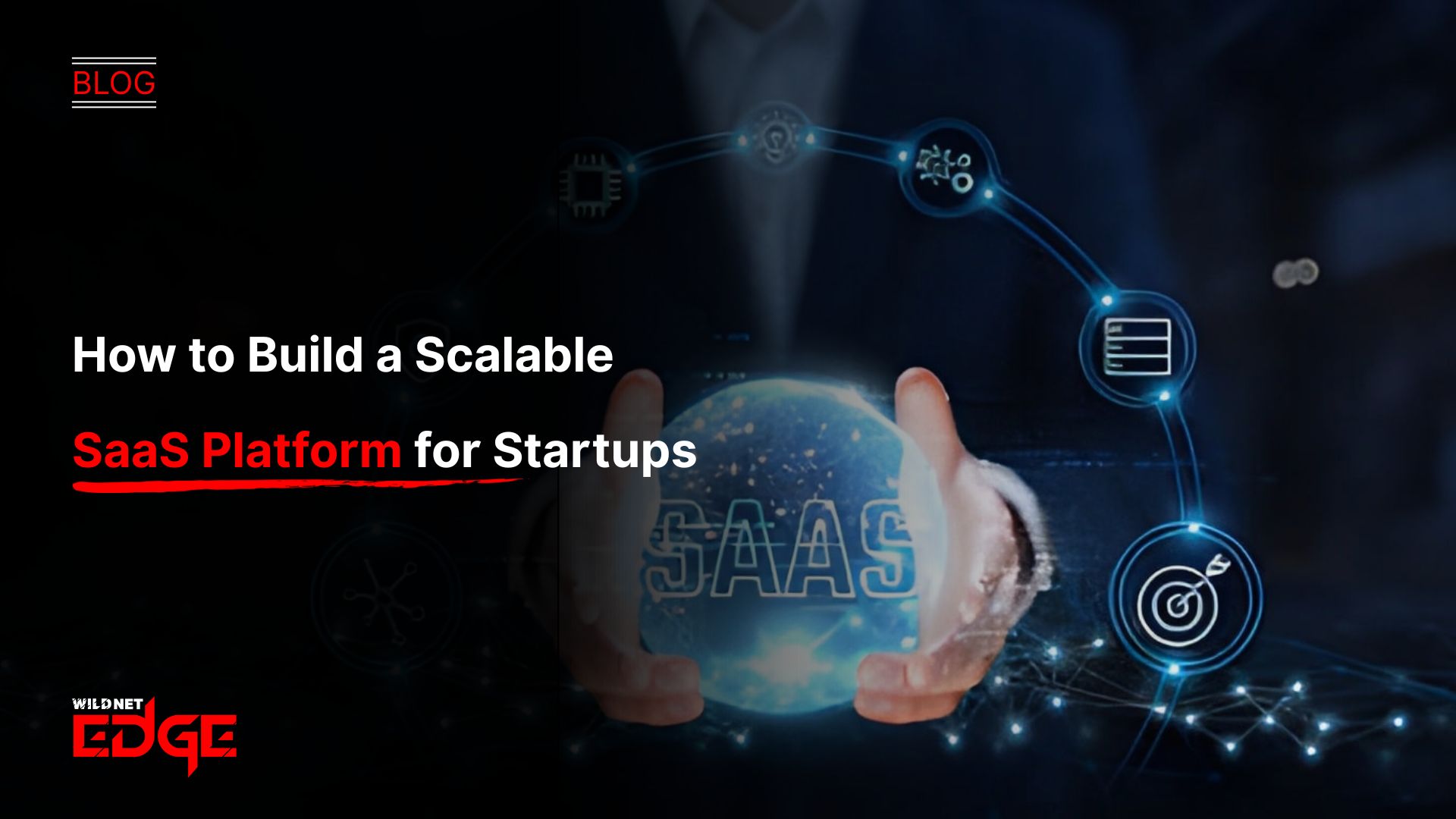TL;DR
This article outlines the critical strategies for building a scalable saas platform, a necessity for startup success. It details that a successful architecture must handle user growth and traffic spikes without performance degradation, which is key for SaaS startup solutions. The blog contrasts monolithic vs. microservices architectures and explains the vital multi-tenancy decision, which impacts cost and isolation. It emphasizes the importance of cloud-based scalability through auto-scaling, load balancing, and serverless computing.
In today’s fast-moving digital world, business growth isn’t just about getting more users; it’s about scaling smartly. A scalable SaaS platform helps your business handle more users, data, and features without slowing down or crashing. Imagine your app growing from a few hundred to millions of users and running smoothly; that’s the magic of scalability. It keeps your software fast, secure, and flexible as your business evolves. With the proper foundation, your SaaS platform can grow easily, save costs, and stay ready for the future. For any business that wants to last, building a scalable SaaS platform isn’t optional; it’s essential.
What is a Scalable SaaS Platform?
A scalable saas platform is an application architected to handle growth efficiently. Your system can manage increased users, data volume, and transaction frequency without suffering performance degradation. It’s about ensuring the 10,000th user has the same fast, reliable experience as the 10th user. This concept of cloud-based scalability is central to the subscription model, where a poor experience leads directly to churn. This often involves horizontal scaling rather than vertical scaling.
Why Scalability is Non-Negotiable Your SaaS Startups
Startups live or die by their ability to grow rapidly. A scalable saas platform is non-negotiable for several business reasons:
- Cost-Efficiency: The pay-as-you-go cloud models enable you to pay solely for what you use. A scalable architecture safeguards against huge over-provisioning costs.
- User Retention: An unreliable, slow, or buggy app is the quickest method to lose users. Reliability earns customer trust and leads to lower attrition rate.
- Market Responsiveness: The ability to scale up your system means that you can introduce new features and take on big clients without hesitation, thus capturing market opportunities. This emphasis on a resilient infrastructure is one of the key principles of modern SaaS startup solutions.
Foundational Architecture: Monolith vs. Microservices
Your core architecture is a key decision.
| Architecture Type | Description | Key Benefits | Limitations |
| Monolith | A traditional approach where the entire application is built as a single, unified unit. Often used for MVPs due to faster initial development. | – Simple to build and deploy initially – Easier for small teams and early-stage products | – Hard to scale as the app grows – Updates can affect the whole system – Maintenance becomes complex over time |
| Microservices | Breaks the application into smaller, independent services (e.g., billing, user auth, search). Ideal for building a complex, scalable SaaS platform. | – Each service can be scaled and updated independently – Increases flexibility, fault tolerance, and development speed – Easier to maintain and evolve | – More complex setup and management – Requires strong DevOps and monitoring systems |
The Critical Decision: Single-Tenant vs. Multi-Tenant Architecture
This is the most important decision for any scalable saas platform.
- Single-Tenant: Each customer gets their own separate instance of the application and database. This offers maximum security and customization but is extremely expensive and complex to manage and update.
- Multi-Tenant: Multiple customers share the same application instance and infrastructure, with their data logically separated and secured. This is the model used by most SaaS startup solutions. It is far more cost-effective and easier to maintain, as you only have one platform to update. However, it requires expert engineering to ensure strict data isolation and manage “noisy neighbor” problems. Building a scalable saas platform almost always means building for multi-tenancy.
Key Components for Cloud-Based Scalability
Achieving true cloud-based scalability relies on specific cloud-native technologies.
- Load Balancers: Distribute incoming traffic across multiple servers to prevent any single one from being overloaded.
- Auto-Scaling: Automatically adds or removes server capacity based on real-time traffic. This is the key to handling sudden traffic spikes while managing costs.
- Stateless Application Tier: Designing your app so that any server can handle any user request. This allows the load balancer and auto-scaling to work effectively.
- Managed Databases: Use cloud databases (like Amazon RDS or Aurora) that can scale read/write operations with the click of a button, rather than managing your own.
- Serverless Functions: For specific, high-volume tasks (like an API endpoint), serverless functions can scale infinitely on demand, making them a core part of a scalable saas platform.
Database: Unsung Hero of Scalability
Your application is only as fast as its database. A poorly designed database is the most common bottleneck for a growing scalable saas platform.
- Choose the Right Tool: A relational database (like PostgreSQL) is often the best start for structured data. A NoSQL database (like MongoDB) might be better for massive volumes of unstructured data.
- Caching: Use in-memory caches (like Redis) to store frequently accessed data. This reduces database load by orders of magnitude and is critical for performance.
- Read Replicas: Create read-only copies of your database to handle search and reporting queries, protecting your main database from slowdowns. Many SaaS startup solutions use a hybrid database approach to optimize performance.
Our SaaS Development in Action: Case Studies
Case Study 1: Scaling FinTech Success with a Secure SaaS Platform
- The Challenge: A FinTech startup needed to build a platform that could handle high-transaction volumes securely and meet strict compliance standards. Their initial prototype couldn’t scale.
- Our Solution: We provided SaaS Development Services to re-architect their product. We built a secure, multi-tenant, microservices-based platform on AWS, using Kubernetes for orchestration and a sharded PostgreSQL database for performance.
- The Result: The new, scalable saas platform handled a 100x increase in user load after its public launch. It passed all security audits, enabling them to close major enterprise deals.
Case Study 2: Building a Scalable SaaS Journey
- The Challenge: A marketing startup had a brilliant idea but a limited budget. They needed to launch an MVP quickly to validate their idea with real users.
- Our Solution: We provided Software Development for Startups using a “scalable monolith” approach. We built the initial application as a single unit for speed but used a clean, modular design that made it easy to break out into microservices later.
- The Result: The startup launched their MVP in just 4 months. After validating their market, we helped them iteratively refactor the most high-traffic modules into separate services, creating a scalable saas platform without a costly full rewrite.
Our Technology Stack for Scalable SaaS
Building scalable saas platform solutions requires a modern, robust tech stack.
- Frontend: React, Angular, Vue.js
- Backend: Node.js, Python, Go, .NET
- Databases: PostgreSQL, MySQL, MongoDB Atlas, Amazon Aurora, Redis
- Cloud Platforms: AWS, Azure, Google Cloud
- DevOps: Kubernetes, Docker, Terraform, CI/CD Pipelines This stack provides the flexibility and power needed for modern cloud-based scalability.
Conclusion
An ultimate strategic investment for a startup is building a scalable SaaS platform. It requires a lot of planning and expertise, but it is the only way to ensure that your success does not turn into your failure. By opting for the right architecture, utilizing cloud-native tools, and prioritizing cloud scalability from the start, you create a strong foundation that can bear your growth.
Ready to build a SaaS product that can conquer the market? At Wildnet Edge, our AI-first approach enhances our Custom Software Development Services. We don’t just build apps; we architect intelligent, scalable systems designed to handle your success.
FAQs
The biggest mistake is ignoring cloud-based scalability completely in favor of pure speed. Building a “throwaway” prototype that is architecturally flawed creates massive technical debt, forcing a costly and time-consuming rewrite the moment the startup begins to succeed.
It allows for independent scaling. If your video processing service gets heavy use but your login service doesn’t, you can add resources only to the video service. This granular control is far more efficient and cost-effective than scaling a single, monolithic application.
You should plan for multi-tenancy from day one, even for your MVP. It is a fundamental architectural decision that is incredibly difficult to add later. A multi-tenant architecture is a core component of virtually all successful SaaS startup solutions.
Yes, this is a pervasive and often smart strategy. It’s called a “scalable monolith.” The key is to build the monolith with clean, modular boundaries from the start, making it easier to break out into microservices later. This is a key part of our Product Development Services.
A stateless application doesn’t store user session data on the app server itself. This means any server can handle any user’s request, which is essential for auto-scaling and load balancing to work effectively. It’s a foundational principle for cloud-based scalability.
Start by analyzing your data. Does it require complex transactions and consistency Or is it massive, unstructured, and needs high-speed writes (use NoSQL like MongoDB)? Many scalable saas platform solutions use a hybrid approach, applying the right database for the right job.
The first step is a thorough discovery and architecture design phase. You must define your core business logic, anticipate future data loads, and map out your technology choices before writing code. This strategic planning is the most critical part of building a successful product.

Nitin Agarwal is a veteran in custom software development. He is fascinated by how software can turn ideas into real-world solutions. With extensive experience designing scalable and efficient systems, he focuses on creating software that delivers tangible results. Nitin enjoys exploring emerging technologies, taking on challenging projects, and mentoring teams to bring ideas to life. He believes that good software is not just about code; it’s about understanding problems and creating value for users. For him, great software combines thoughtful design, clever engineering, and a clear understanding of the problems it’s meant to solve.
 sales@wildnetedge.com
sales@wildnetedge.com +1 (212) 901 8616
+1 (212) 901 8616 +1 (437) 225-7733
+1 (437) 225-7733































